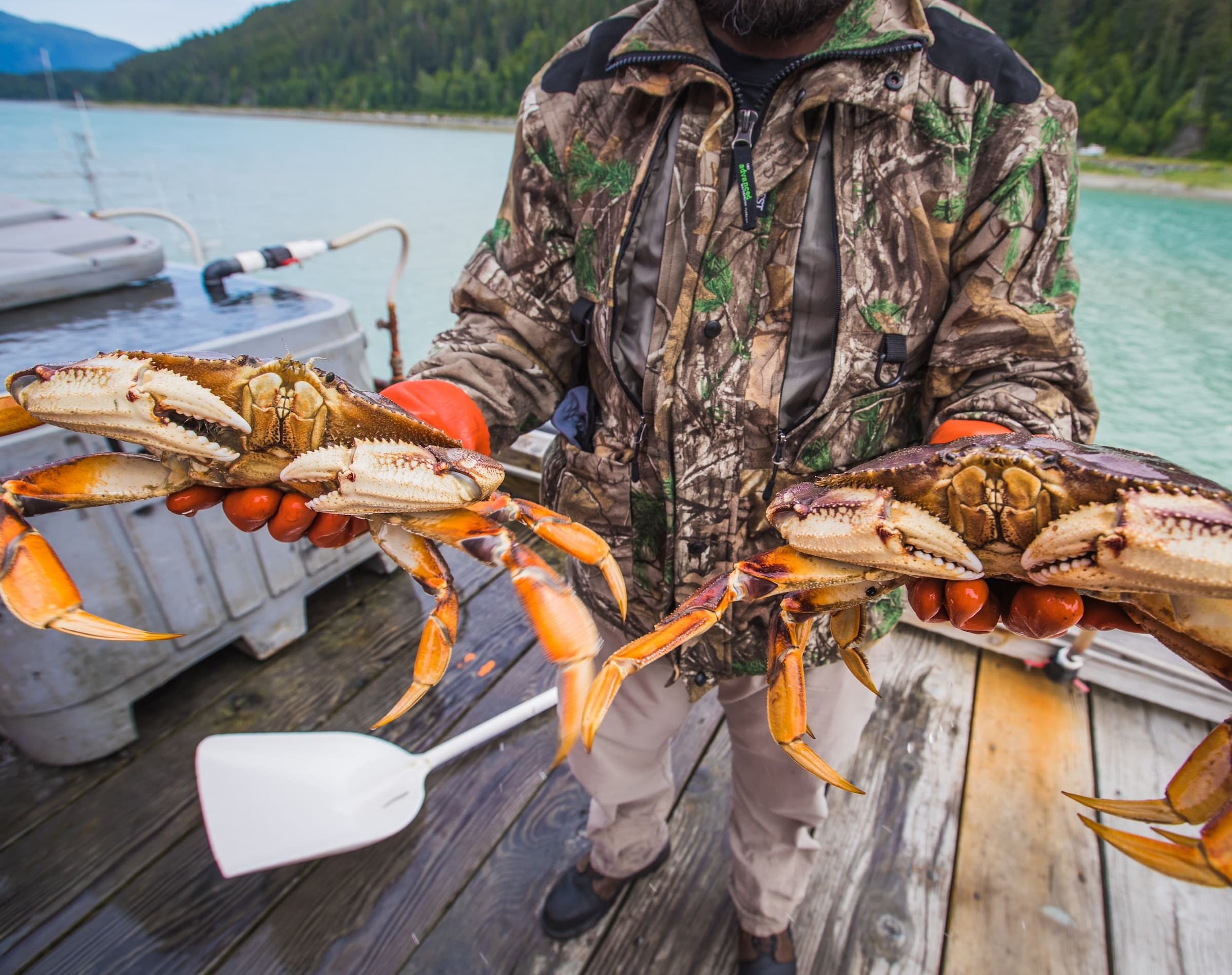What's in a name?
Succulent, slightly sweet, and a tad salty, Dungeness crab (often referred to simply as “Dungy”) gets its name from a small Washington state fishing town called (you guessed it) Dungeness, where these crabs enjoy prime habitat on the famous Dungeness Spit.
Despite their provincial namesake, Dungeness crabs span a broad range of habitats from Alaska’s Aleutian Islands to Mexico’s Baja California peninsula. Fishermen along the entire Pacific Coast of North America participate in Dungeness crab fisheries, often in their offseason from other fisheries such as the summer salmon season.
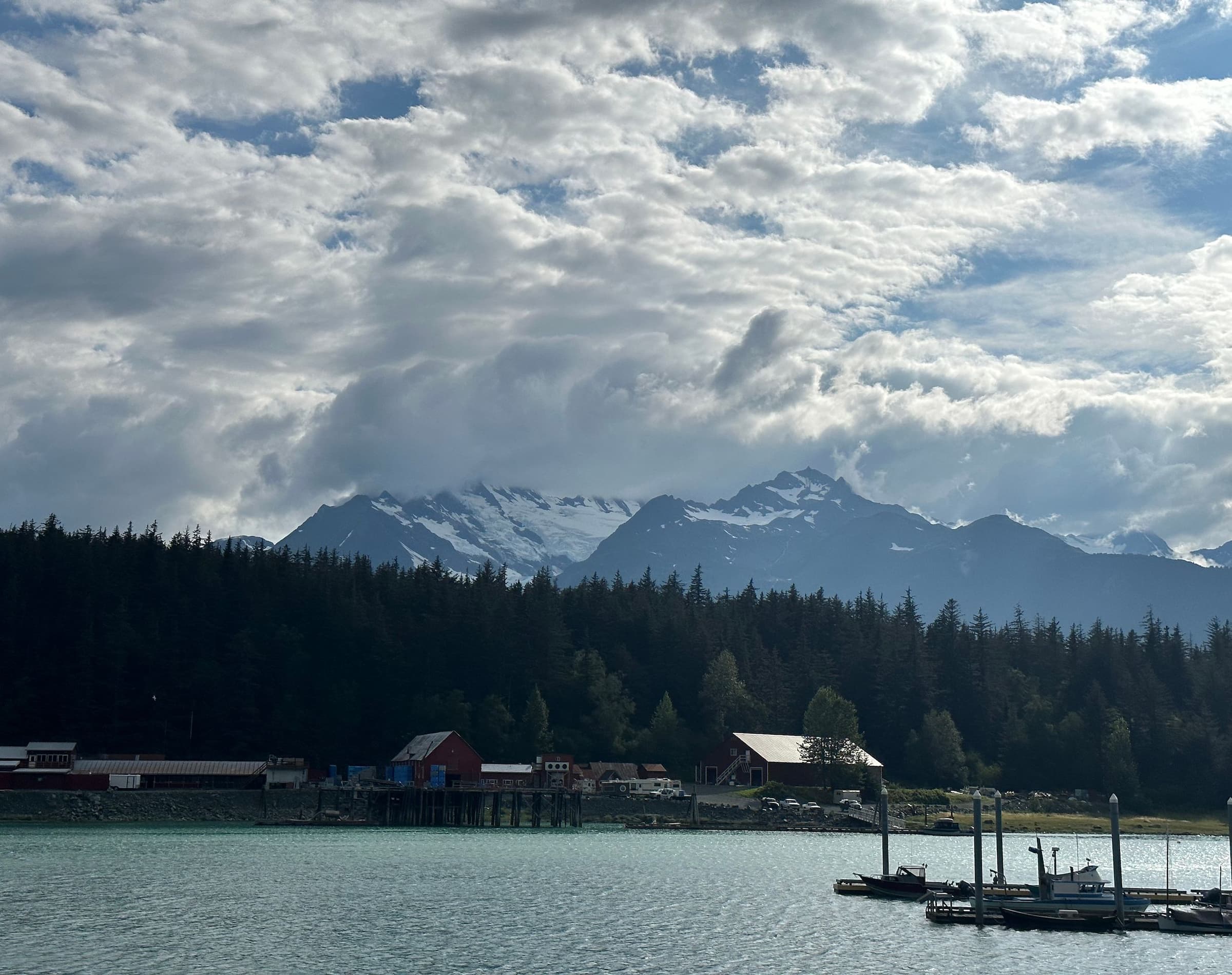
Where they're caught
This year, we’re delivering Dungeness crab caught by small-boat fishermen in the Southeastern fisheries management area of Alaska as well as Washington and Oregon fisheries. The Alaskan Dungeness are processed in Petersburg, Alaska while the crab caught in the Pacific Northwest are processed in Astoria, Oregon.
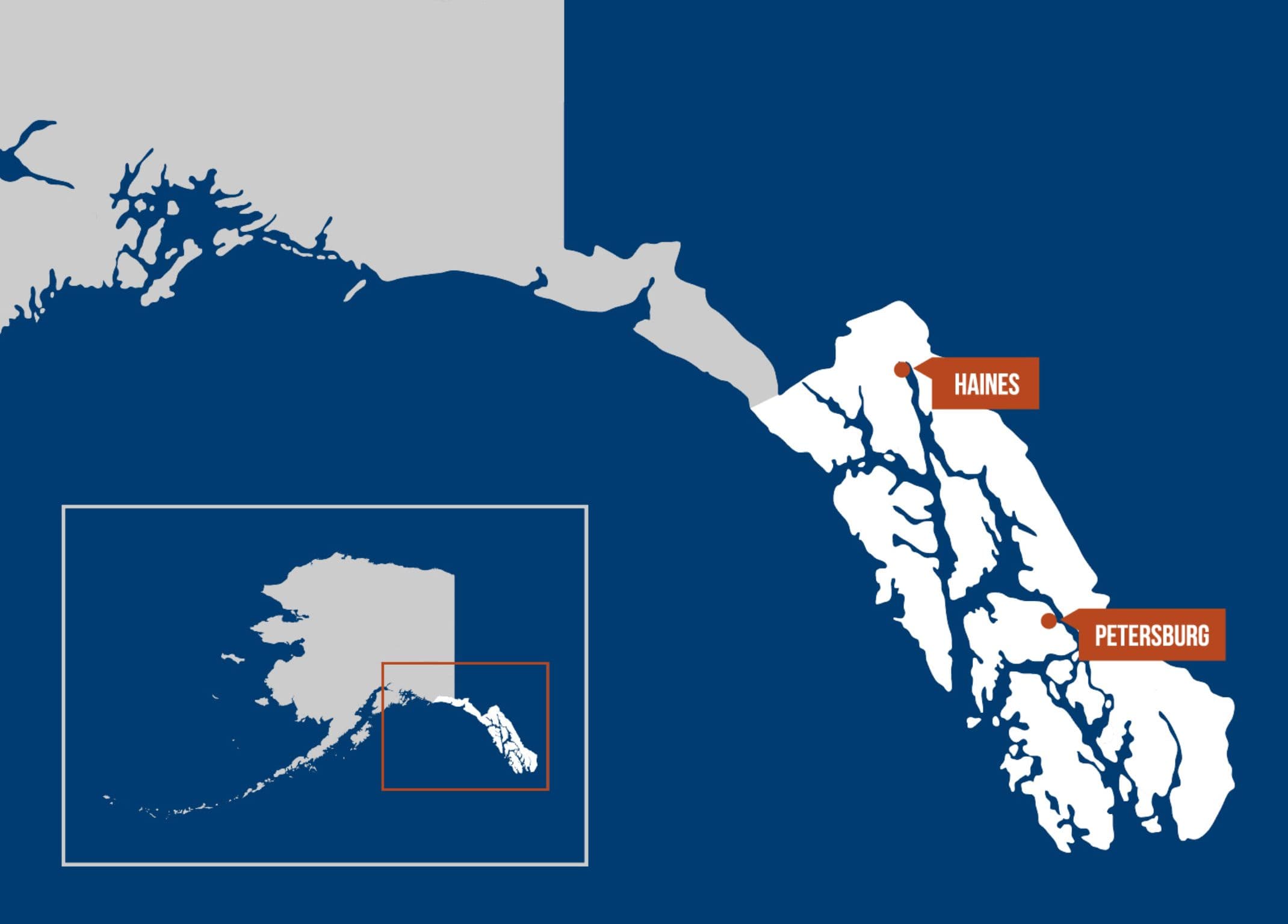
When they're caught
Dungeness crab fisheries typically open biannually in Alaska: one in the early winter; and another in early summer. With this seasonal rhythm, Alaskan fishermen have been catching between 2 to 3 million pounds along the coasts of Alaska every year for the last ten years — making the Dungy fishery a healthy supplement to their fishing livelihood.
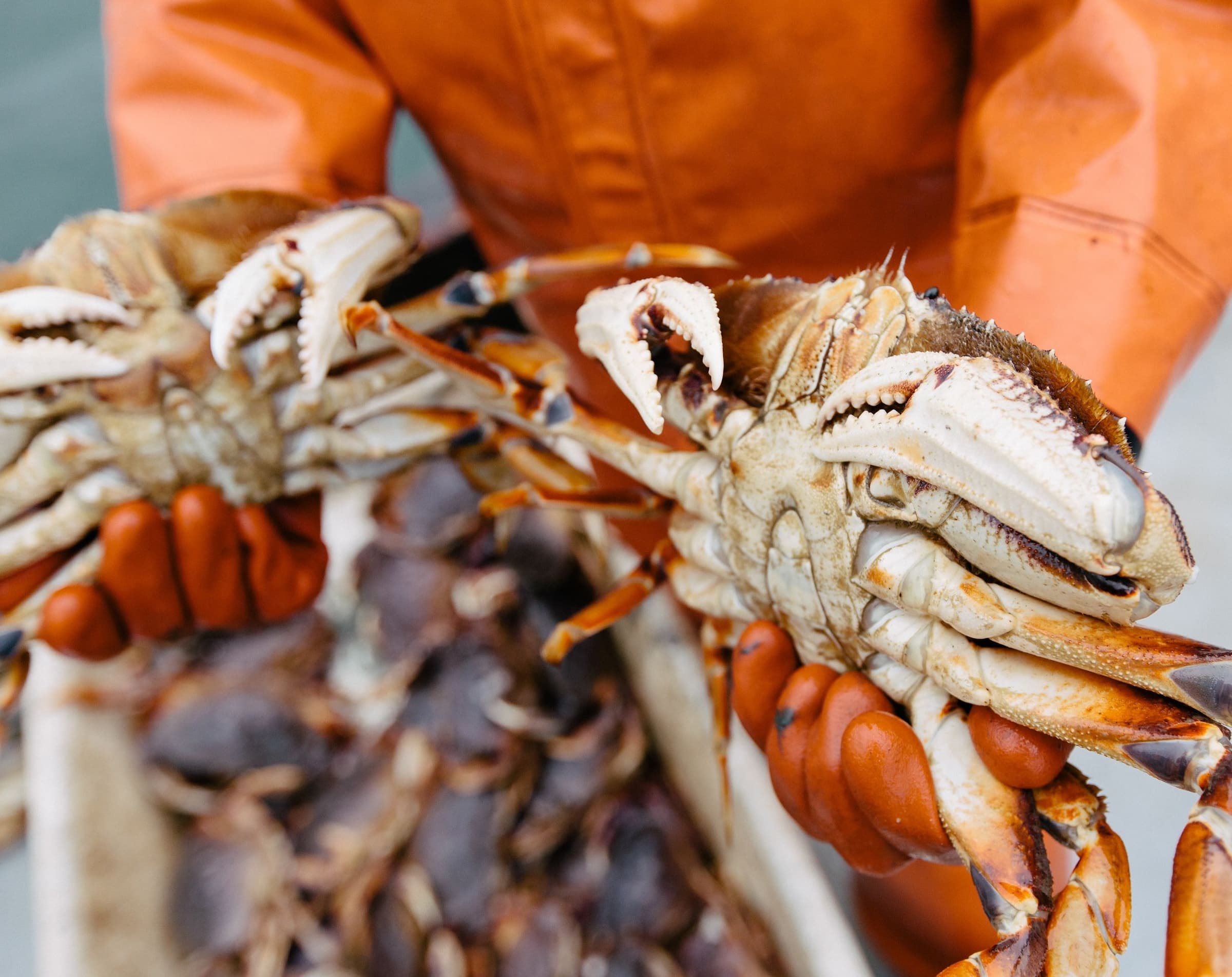
Dungeness crabs live primarily in sandy eelgrass beds where they are foragers, predators, and prey. They’re a favorite food of otters, who find them a great deal easier to catch than Dungy’s distant cousin, spot shrimp. They’re also one of our favorite foods, and we’re proud to offer them seasonally to our seafood members.
Sustainable fisheries management
As with all Alaskan fisheries, fishermen must adhere closely to the management rules set out by the Alaska Department of Fish & Game (ADF&G) regarding size limits, pot regulations, and fishing area closures.
Harvesting Dungeness crab is heavily regulated to prevent overfishing — only males of a certain size may be harvested and only after the spawning (reproduction) season is over. Crabbers can only target male crabs that are 6.5 inches in width from “notch-to-notch.” These notches are defined as “the two notches immediately anterior to the tenth anterolateral spine,” per ADF&G (these guys don’t mess around when it comes to the minutia of fishery management).
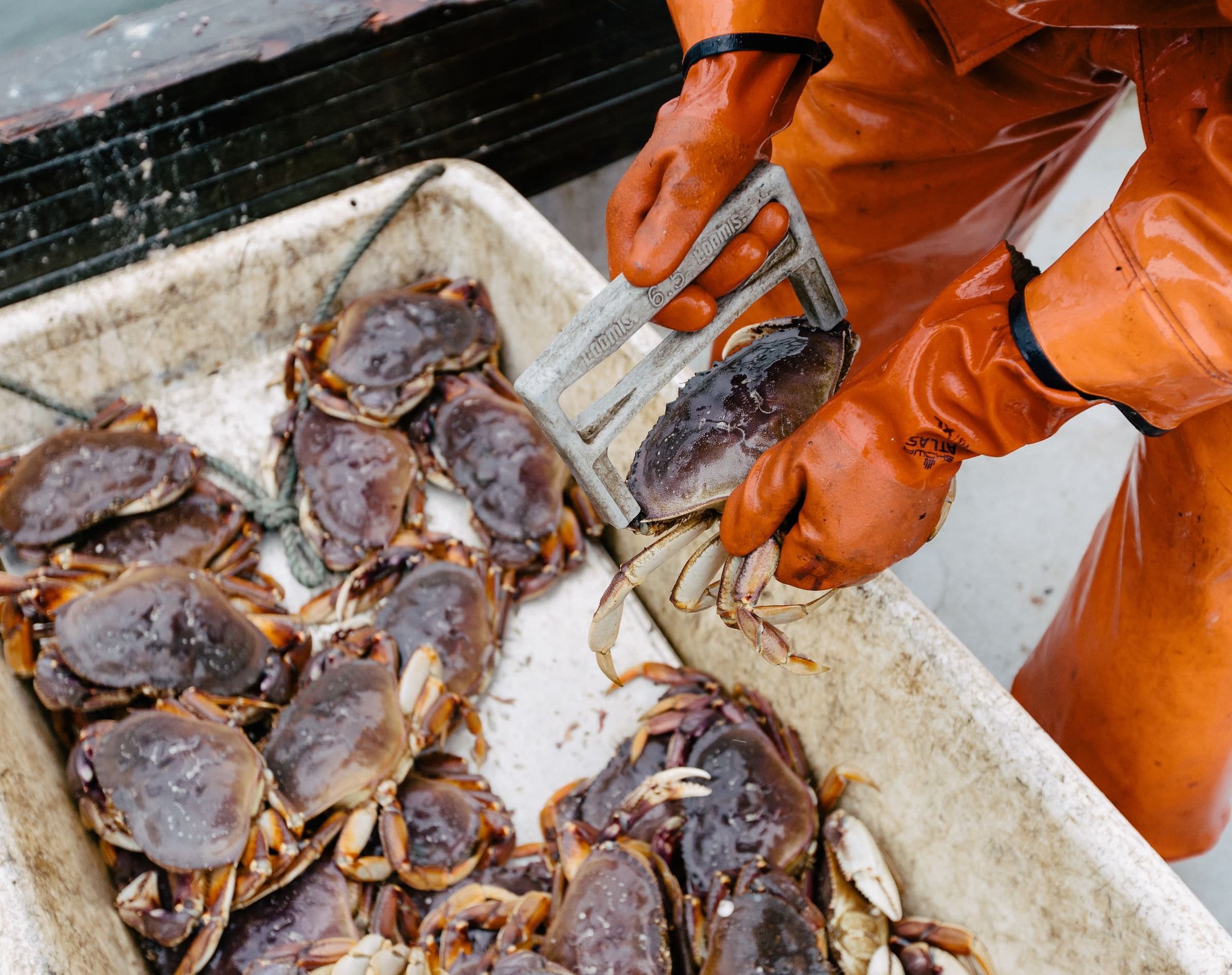
Luckily, over time, fishermen have devised tools to help them. For example, they use crab pots that have holes in them which allow the smaller crabs to escape freely, as well as a notch-to-notch measurement device that they use to check the male’s notch-to-notch width of their carapace (their upper shell) — any undersized crabs must be released.
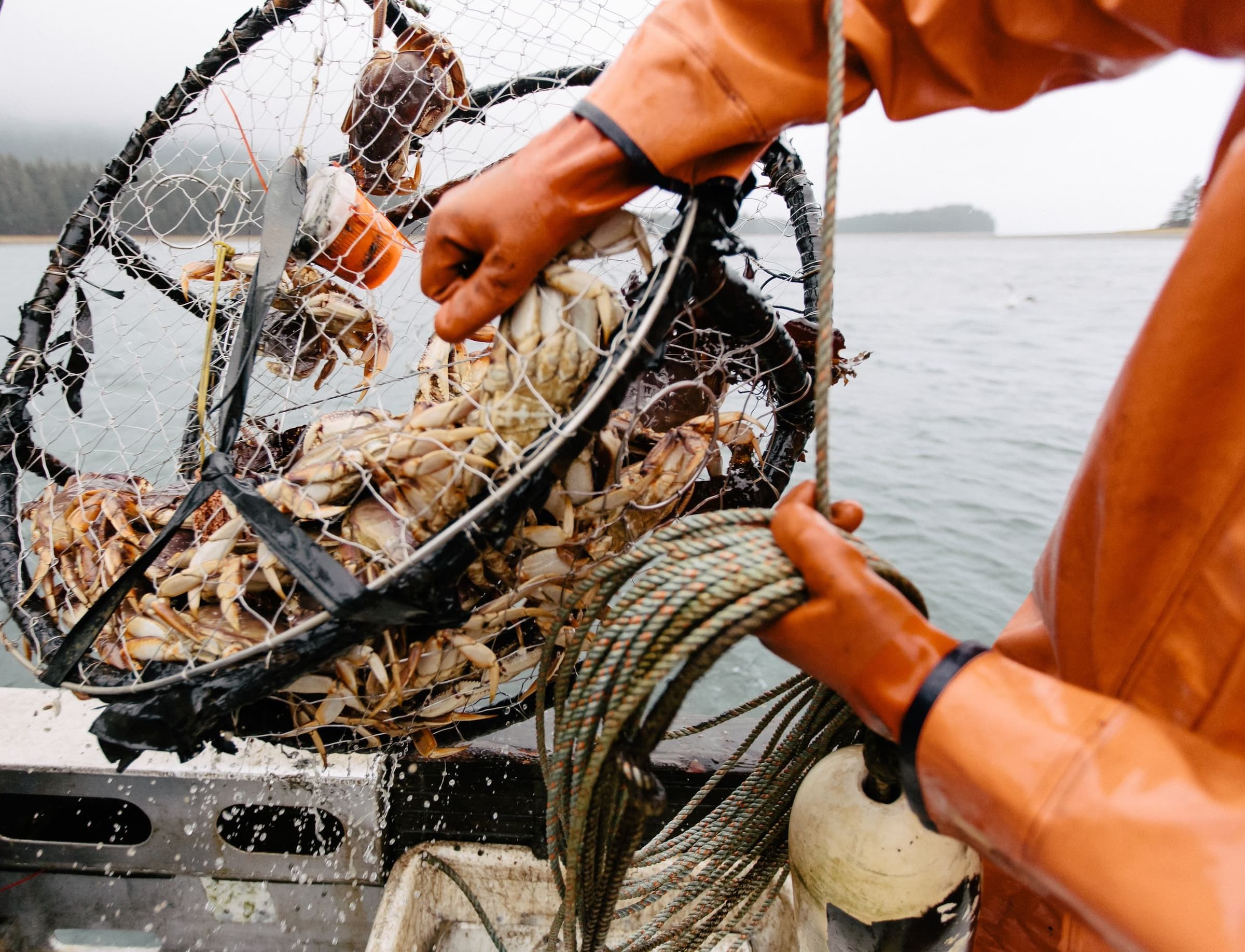
In addition to avoiding harvest during spawning season, the fishery is also closed when male and female Dungeness crabs are molting. This is a period in which they shed their hard exoskeletons, and are therefore especially susceptible to disturbances or predation while their now-soft exoskeleton regrows.
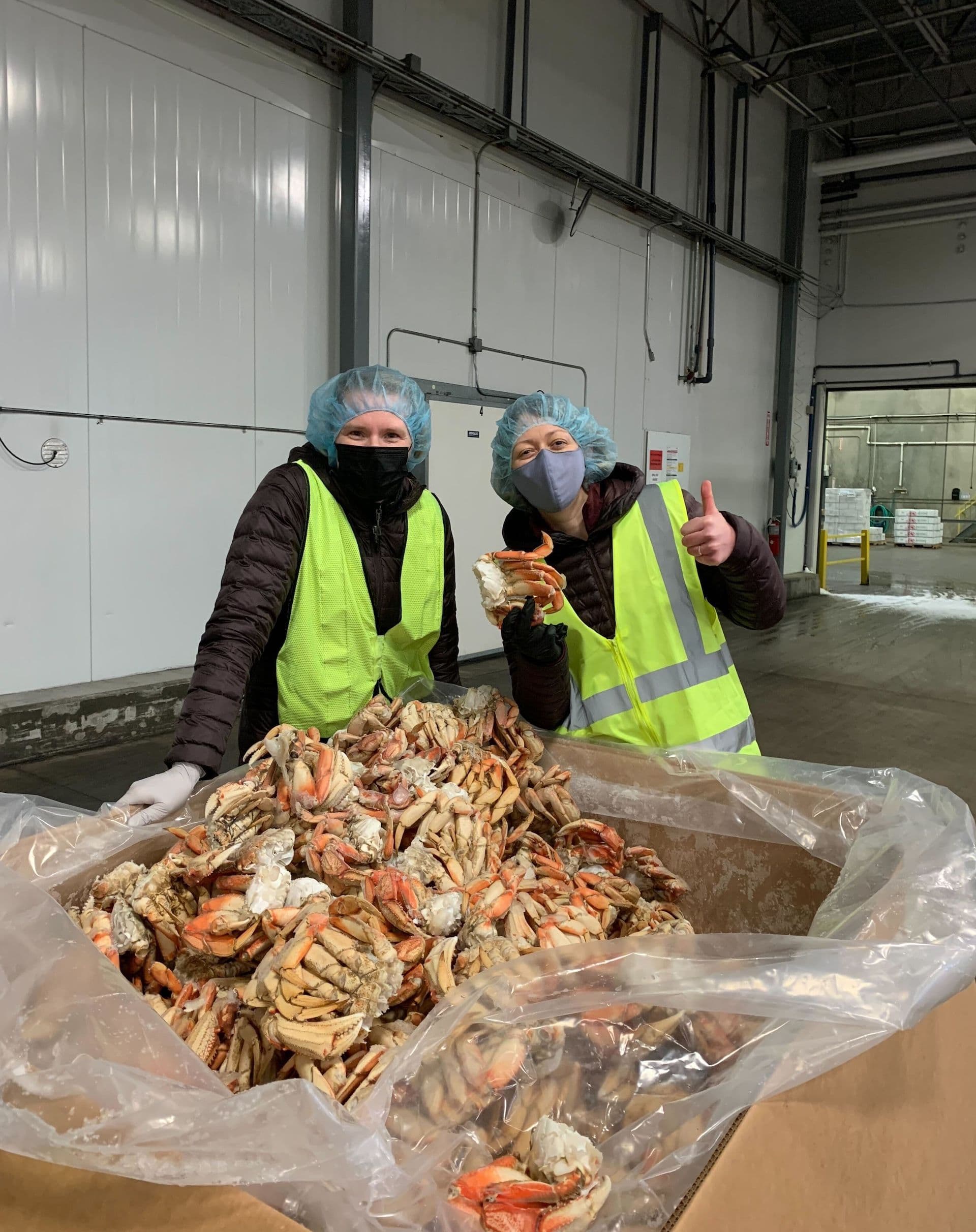
Looking ahead
These stringent fisheries management measures are especially important in the era of climate change. Ocean acidification especially impacts crustaceans who need their calcified exoskeleton to protect them. What’s more, research by the National Oceanic and Atmospheric Administration indicates that Dungeness’ navigational sensory aids (“mechanoreceptors,” which are small hairs that report chemical data and are akin to our sense of smell) are also impacted by ocean acidification. Since their eyesight is poor, this sensory “blinding” increasingly inhibits Dungeness crabs from efficiently navigating and finding prey.
That’s why we only source seafood from responsibly-managed fisheries that use science-based methods to monitor the health of the crab population and adapt accordingly with the focus to always promote sustainable yield of this dynamic and delicious crab.
